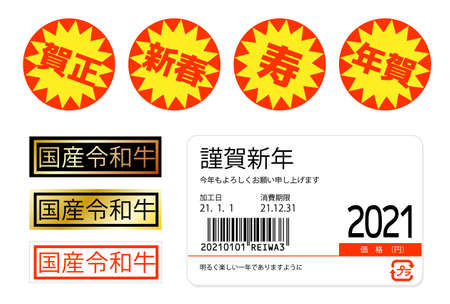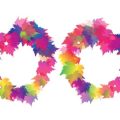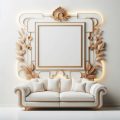1. Understanding Feng Shui Basics in the American Context
Feng Shui is an ancient Chinese practice focused on creating harmony between people and their living spaces. While its roots are thousands of years old, Feng Shui has become popular in the United States as homeowners look for ways to improve their comfort and well-being. However, with its rise in popularity, many misconceptions have spread, especially when it comes to quick-fix products that promise instant results.
What Is Feng Shui Really About?
At its core, Feng Shui is about arranging your environment to support positive energy flow—often called “chi” or “qi.” This involves considering furniture placement, color choices, lighting, and even the layout of your home. The main goal is to create balance and invite good fortune, health, and happiness.
Common Misconceptions in America
| Misconception | Reality |
|---|---|
| Buying specific objects (like lucky frogs or coins) will solve all problems | No single object can fix your entire homes energy; true Feng Shui considers the whole space. |
| You need to follow strict rules or complex calculations | Feng Shui principles can be adapted simply; its more about mindful design than memorizing formulas. |
| Feng Shui only works in Asian homes or with Asian décor | Feng Shui adapts to any style—including modern American homes—by focusing on universal ideas like clutter reduction and natural light. |
How Americans Adapt Feng Shui Principles
In the U.S., homeowners often blend traditional Feng Shui ideas with contemporary design. For example, instead of using ornate Chinese symbols, they might focus on:
- Keeping entryways clear and inviting
- Maximizing natural light in living areas
- Arranging furniture for easy movement and conversation
- Adding plants for a touch of nature and freshness
This approach makes Feng Shui accessible for everyone, regardless of culture or home style. Understanding these basics helps you avoid falling for ineffective products that claim to bring good luck overnight. Instead, focus on small, meaningful changes that truly enhance your living space.
2. The Allure of Quick Fixes: Why People Fall for Gimmicks
In the world of feng shui, it’s easy to find products that promise instant results—a lucky bamboo plant, a money frog, or a bagua mirror you just hang up and wait for good fortune to arrive. But why are these quick fixes so appealing, especially in American culture? Let’s break down the psychological and cultural reasons behind this trend, particularly in the wellness and home décor markets.
Instant Gratification Culture
Americans are often surrounded by messages promoting speed and convenience. From fast food to one-day shipping, waiting is rarely encouraged. This mindset carries over into how people approach their homes and well-being. When faced with complex problems or discomfort at home, its natural to look for simple solutions that offer immediate comfort or hope.
Common Psychological Triggers
| Trigger | Description | Example in Feng Shui Shopping |
|---|---|---|
| Desire for Control | People want to feel empowered over their environment and luck. | Buying a “wealth corner” crystal to attract money. |
| Hope for Fast Results | The appeal of seeing quick improvements without much effort. | Purchasing a pre-packaged feng shui kit promising instant harmony. |
| Social Influence | Following trends seen on social media or recommended by friends. | Getting a trending “lucky cat” after seeing influencers use it. |
| Emotional Comfort | The feeling that taking action (even a small one) is better than doing nothing. | Placing a wind chime for peace during stressful times. |
Cultural Influences in the U.S.
The American market is filled with “DIY” culture and self-help trends, making it easy for quick-fix feng shui products to fit right in. Many Americans see their home as an extension of their personality and success. Wellness brands often market feng shui objects as both spiritual tools and stylish décor pieces, blurring the line between tradition and trend. The combination of curiosity about Eastern practices and the love for easy solutions creates the perfect environment for these gimmicky products to thrive.
Key Takeaways:
- The promise of fast change is hard to resist when life feels busy or uncertain.
- Marketing techniques tap into emotions, making products seem essential rather than optional.
- The blending of ancient wisdom with modern aesthetics makes these items popular gifts and conversation pieces—even if their effectiveness isn’t guaranteed.

3. Popular Ineffective Feng Shui Products on the Market
Many stores and online retailers in the United States offer a wide range of Feng Shui products, promising to attract wealth, improve health, or boost relationships instantly. However, not all these items have roots in traditional Feng Shui practices or scientific support. Here’s a look at some commonly sold products that may not deliver real results:
Common Ineffective Feng Shui Products
| Product | Description | Why Its Ineffective |
|---|---|---|
| Lucky Bamboo Plants | A small bamboo plant often placed in homes or offices for “good luck.” | While plants can freshen up a space, simply adding bamboo doesn’t change energy flow unless overall layout and organization are considered. |
| Feng Shui Coins Tied with Red String | Chinese coins tied together with red thread, said to invite prosperity when hung near doors or cash registers. | No evidence supports that these coins alone bring wealth; true Feng Shui focuses on space arrangement rather than objects. |
| Crystal Balls or Obelisks | Clear or colored crystals displayed to “activate” positive energy or deflect negativity. | There’s no scientific proof that crystals affect energy flow in the way claimed by many product sellers. |
| Wealth Cats (Maneki Neko) | Ceramic cats with a waving paw, believed to attract fortune and customers. | This symbol comes from Japanese culture, not traditional Chinese Feng Shui, and has little to do with authentic practice. |
| Bagua Mirrors | Mirrors shaped like an octagon with trigrams around them, said to ward off bad energy outside the home. | If misused or placed incorrectly, these mirrors can create more problems than they solve and are often unnecessary in American homes. |
| Lucky Charms and Amulets | Pendants, keychains, or bracelets featuring dragons, tigers, or zodiac animals. | Wearing charms is not a substitute for evaluating your environment’s true energy flow and balance. |
| Pre-packaged “Feng Shui Kits” | Kits that include several objects—coins, bells, figurines—advertised as a quick solution for all Feng Shui needs. | A one-size-fits-all approach ignores each home’s unique design and energy patterns, making these kits largely ineffective. |
Why Do These Products Remain Popular?
The appeal of quick fixes is strong because people want immediate improvements without making big changes to their living spaces. Retailers take advantage of this by offering easy-to-buy solutions. However, authentic Feng Shui emphasizes thoughtful arrangement, decluttering, and harmony within your environment—not just adding decorative items.
4. How to Identify Red Flags and Marketing Hype
When shopping for Feng Shui products in the United States, it’s easy to get caught up in flashy marketing or promises of instant results. Here are some practical ways to spot products that might not deliver what they promise:
Common Red Flags to Watch Out For
| Red Flag | What It Means |
|---|---|
| Guaranteed Quick Results | Claims that a product will “instantly” fix your life or bring overnight wealth are usually exaggerated. |
| Celebrity Endorsements Without Substance | If a product relies heavily on celebrity testimonials but lacks real explanation, be cautious. |
| No Connection to Traditional Feng Shui | Many items are marketed as Feng Shui but have no basis in authentic principles or practice. |
| Poor Quality Materials | Cheaply made trinkets sold at high prices often focus on profit, not effectiveness. |
| Vague or Magical Promises | Phrases like “magically attract good luck” with no clear method are warning signs. |
Tips for Spotting Ineffective Products
- Do Your Homework: Look up whether the product has any roots in genuine Feng Shui practices. Authentic tools have a history and a purpose beyond just being decorative.
- Avoid Overpriced Trinkets: Expensive objects with no clear function or tradition behind them are usually more about sales than real energy improvement.
- Ask Questions: Reputable sellers should be able to explain how and why their products work according to Feng Shui, not just promise magic results.
- Focus on Placement, Not Just Objects: Real Feng Shui is about arranging your space thoughtfully—not just filling it with lucky charms. If a product ignores this, think twice before buying.
- Check for Cultural Appropriation: Be wary of items that use Asian imagery or symbols without understanding their meaning or context—they may be marketed for aesthetics rather than effectiveness.
Quick Checklist Before You Buy
- Is the product explained in simple, realistic terms?
- Can you find information about its use in traditional Feng Shui?
- Are reviews and recommendations from credible sources?
- Does the seller provide guidance on placement and purpose?
- Avoid anything that feels too good to be true—it probably is!
5. What Really Works: Authentic Feng Shui Practices You Can Use
It’s easy to be tempted by quick fixes when it comes to Feng Shui—colorful crystals, lucky coins, or mass-produced figurines claiming to bring instant fortune. But real harmony and well-being in your American home come from understanding authentic Feng Shui principles and applying them with intention. Let’s focus on research-backed, sustainable strategies you can use right now, without falling for ineffective gimmicks.
Understanding the Basics: The Flow of Energy
Feng Shui is all about creating a smooth flow of energy (or “chi”) throughout your living space. Here are some simple ways to promote positive energy:
| Strategy | How To Apply It in Your Home |
|---|---|
| Declutter Regularly | Keep entryways clear, organize closets, and donate items you no longer use. |
| Let in Natural Light | Open blinds during the day and use mirrors to reflect sunlight into darker corners. |
| Balance the Five Elements | Add natural materials like wood (plants), water (fountains), metal (frames), earth (pottery), and fire (candles). |
| Mindful Furniture Placement | Avoid blocking pathways; arrange seating to encourage conversation and connection. |
The Power of Intention Over Objects
Feng Shui isn’t about the number of trinkets you display. It’s about how you feel in your space and the intention behind your choices. For example, instead of buying a generic “wealth frog,” focus on setting up your workspace so it feels productive and inspiring—this has a far greater effect on your well-being and success.
Practical Tips for American Homes
- Front Door Focus: Make sure your front door is visible, clean, and welcoming. This invites good energy into your home.
- Bedrooms Matter: Place beds so you can see the door but aren’t directly in line with it. Choose calming colors and limit electronics.
- Kitchens as Heart of the Home: Keep this area tidy; fix leaky faucets, as flowing water represents wealth and should not be “draining away.”
- Create Calm Zones: Set aside a spot for relaxation—add cozy chairs or soft lighting where you can unwind.
Sustainable Changes Over Quick Fixes
Lasting harmony comes from small, thoughtful changes that suit your lifestyle—not just following trends or buying random products. Start with one room at a time, observe how you feel, and adjust as needed. Authentic Feng Shui is flexible and personal; it evolves with you and your family.


